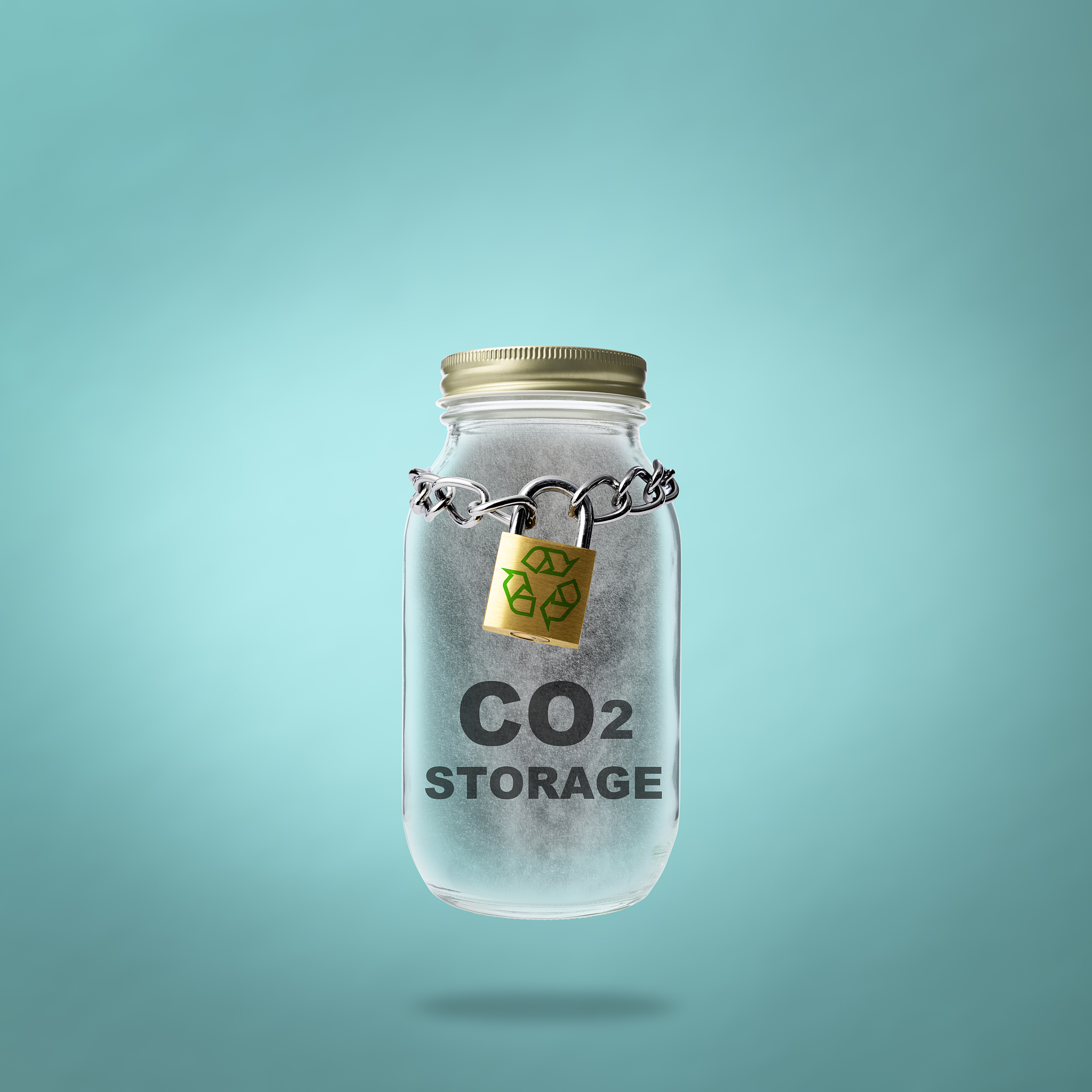
China's first offshore carbon storage project?is designed to store 1.5 million tons of carbon dioxide from the platform's full life cycle.?(PHOTO:?VCG)
By?WANG?Xiaoxia
About 200 kilometers southwest of Shenzhen, China's first offshore carbon storage project is operating on the Enping 15-1, the largest offshore crude oil production platform in Asia. The project is designed to store 1.5 million tons of carbon dioxide (CO2) from the platform's full life cycle, according to the China National Offshore Oil Corporation (CNOOC).
Natural storeroom
Associated gas is usually found in the drilling and development of crude oil, and CO2 accounts for 20 to 30 percent of the gas. As for Enping 15-1 oilfield, the "gas cap" above the oil in the reservoir has a very high carbon dioxide content.
It is estimated that the oilfield will produce about 1.5 million tons of CO2 during its full life cycle, said Mi Lijun, director of the CNOOC Research Institute, adding that without intervention, the CO2 can escape during crude oil production, which will cause corrosion of the offshore platform facilities and submarine pipelines, as well as increase China's CO2 emissions. Therefore, engineers try to capture these CO2 emissions and inject them deep into the seabed to where they can be permanently stored.
The first step is to find a suitable "storeroom". About 3 kilometers from the Enping 15-1 platform and 800 meters below the seabed, technicians found a "dome-like" geological structure.
This structure is like an inverted "giant bowl" which not only has a large storage capacity, but also has a strong sealing ability, and thus can store CO2 stably for a long time, said Mi. Carbon dioxide is not automatically separated from the associated gas, and requires a series of processes such as capture, separation, dehydration and pressurization.
"When CO2 is pressurized to 11 MPa, it will reach a supercritical state," Mi told Science and Technology Daily, adding that it takes only about 20 minutes to inject supercritical carbon dioxide from the Enping 15-1 platform into the storage structure.
Building a channel
To transport the processed CO2 back into the seabed requires a channel that connects the offshore oil platform and the storage structure.
The soil in this area is very soft and can't provide enough support for the drilling tool. Engineers therefore divided the construction into four phases and adopted four different sizes of drill bits. They used low temperature rheological stable drilling fluid to provide more support for the path of drill bits.
Another challenge is the CO2 corrosion. When CO2 meets water, it produces carbonic acid, which severely corrodes the steel and cement of the channel and leads to the risk of leaking.
"The technical team carried out research and found that by adding element chromium (Cr), the corrosion resistance of the pipe can be greatly improved, along with the use of anti-corrosion cement," said Mi, adding that these technical achievements will ensure the channel safety during the operation period of several decades.
Demonstration project
Enping 15-1 offshore carbon storage project became operational on June 1. It can store a maximum of 300,000 tons of CO2 a year. Although this capacity is not noteworthy in the field of carbon capture, utilization and storage (CCUS) across the country, the main role of this project is a demonstration for further application of offshore carbon storage, said Mi.
As the main carbon sink for our planet, the ocean absorbs excess heat and energy released from rising greenhouse gas emissions trapped in the Earth's system. For China, its seabed has rich and suitable geological conditions for offshore carbon storage.
In January, the Ministry of Natural Resources released the assessment of the offshore carbon storage potential, stating that it can reach 258 trillion tons, about 200 times more than China's total carbon dioxide emissions in 2022.
Offshore storage of CO2 has become an important option for China to solve the contradiction between economic development and carbon emissions in its eastern coastal areas.
CNOOC has launched China's first ten-million-ton CCUS cluster project in Huizhou, Guangdong province, which will capture CO2 emitted in the Daya Bay area in the future, and transport it to the seabed through pipelines and ships for storage, said Mi.
The trio will conduct a series of experiments in fields such as life science, fluid physics, combustion science and materials science. Notably, this is the first time that fruit flies have been taken on a Chinese space mission as experimental subjects. What made scientists choose fruit flies? What experiment will they undergo?
